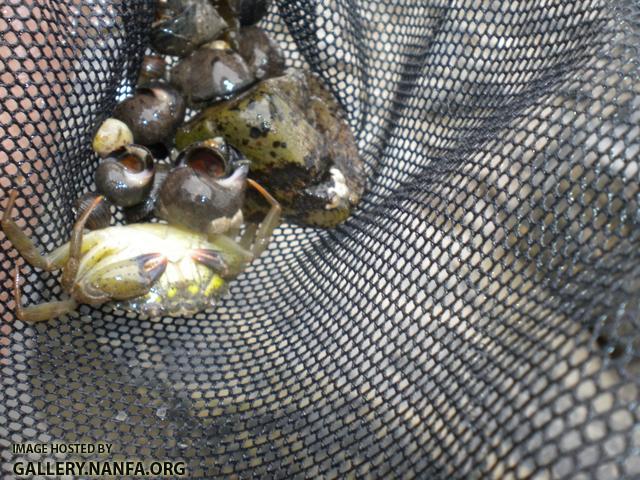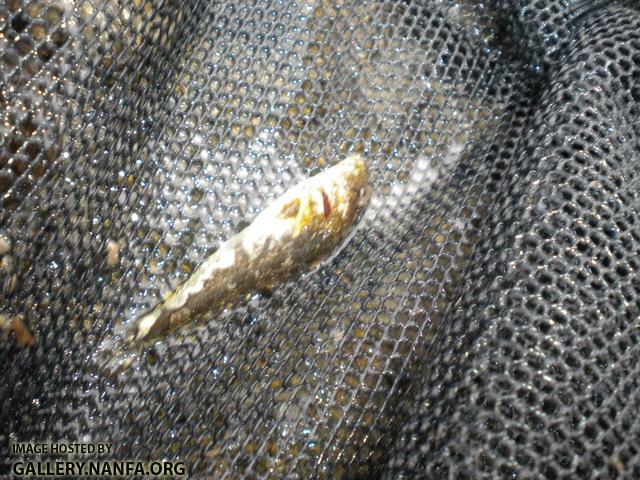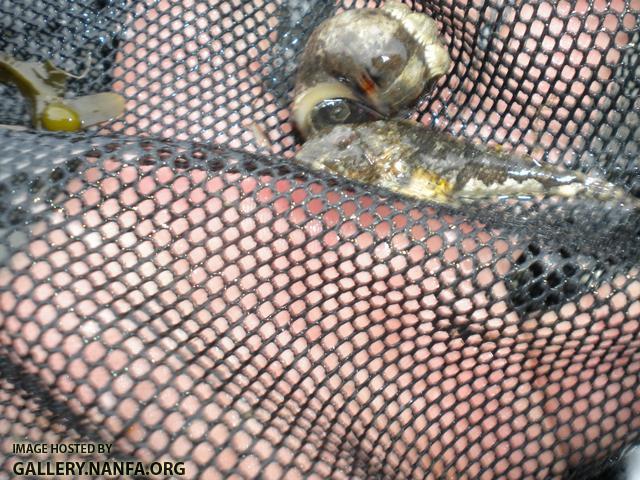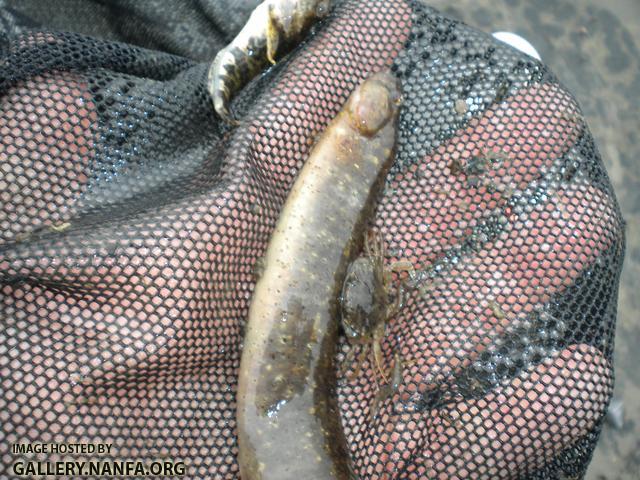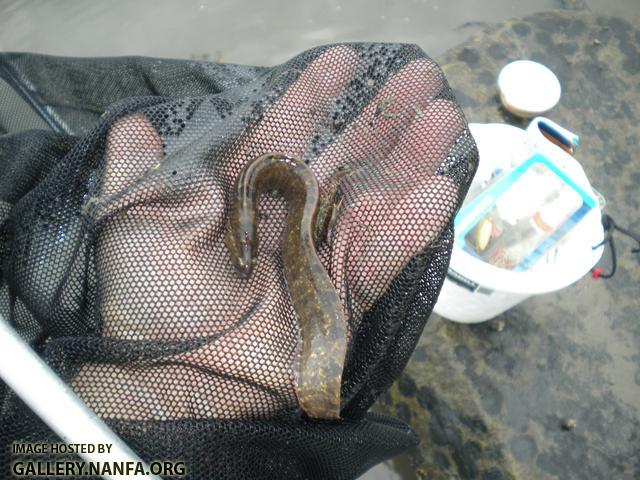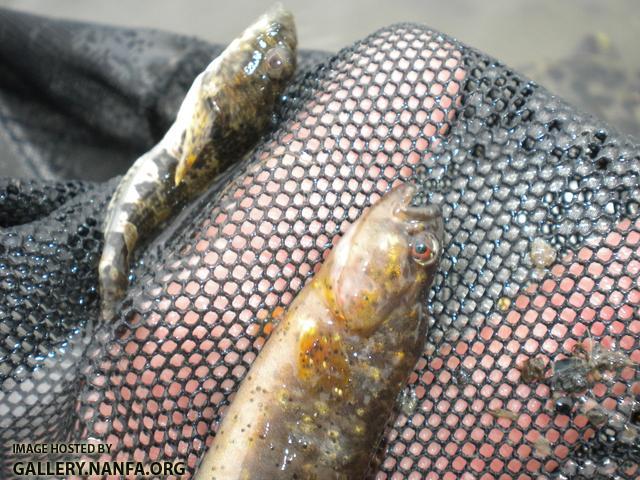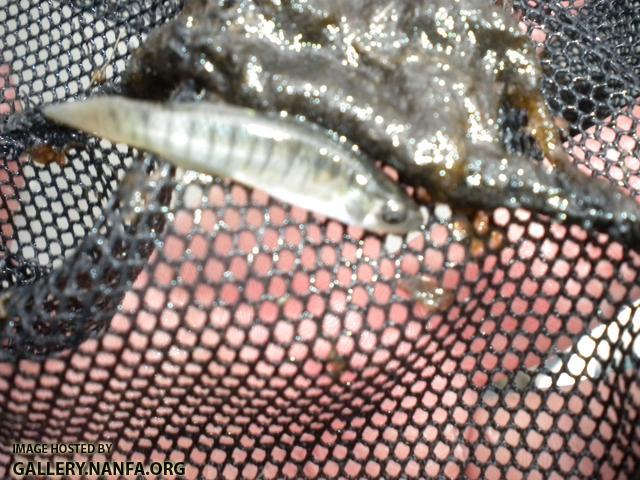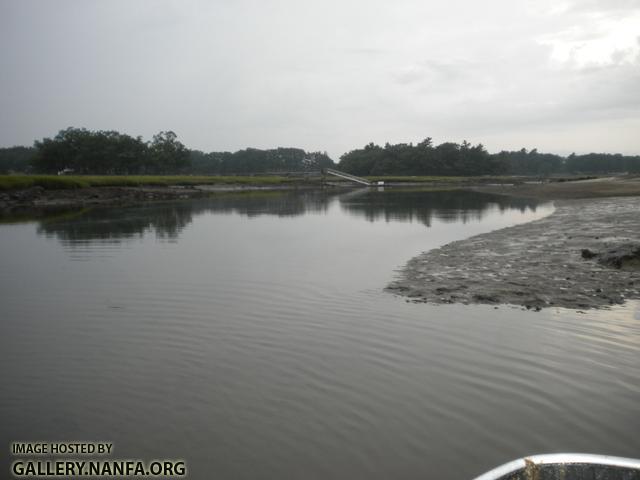
My sampling method was simple, thrusting my dipnet under weeds and rocks to see what I can find.
My first two fish were Wrasse of some kind (maybe cunner). (Forgive me if I flub any ID's, the ocean is not a usual stomping place for me).
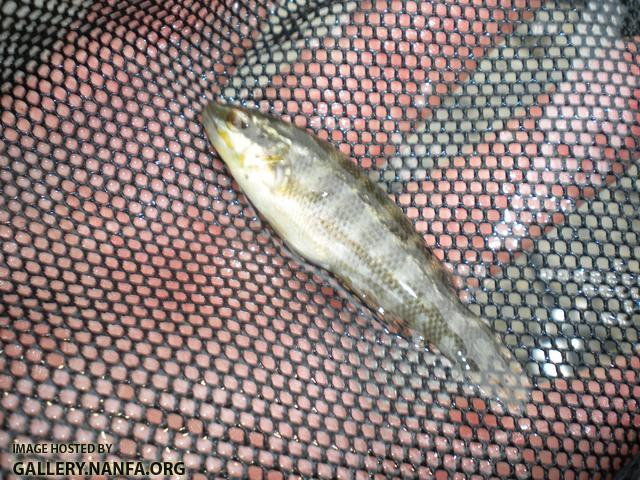
I am glad I decided to photograph them as they were the only ones I got.
The most common fish were a kind of greenish stickleback with black stripes. Not intending to sample I didn't bring a phototank with me so I couldn't see the spines. But the spines ARE definately their. This was the ONLY stickleback I held in my hand, OUCH!
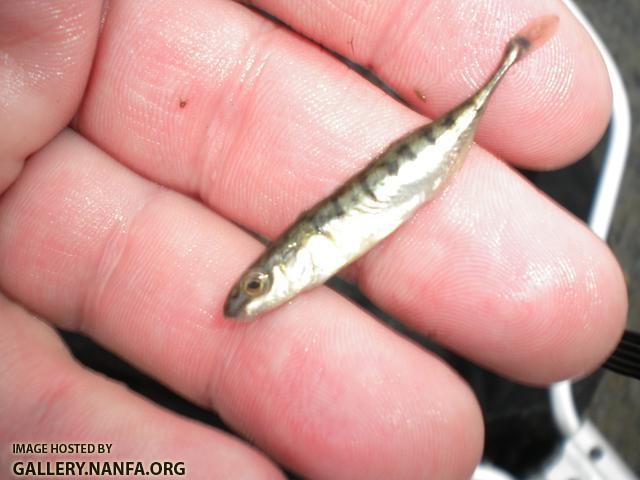
One of the sticklebacks looked different (silvery instead of green with stripes) but the photo of it did not come out.
Green Crabs were very common, ranging from tiny ones to ones big enough to make me wonder if they are edible. This is one of the few I photographed as it shows the oddly bright green of the belly.
